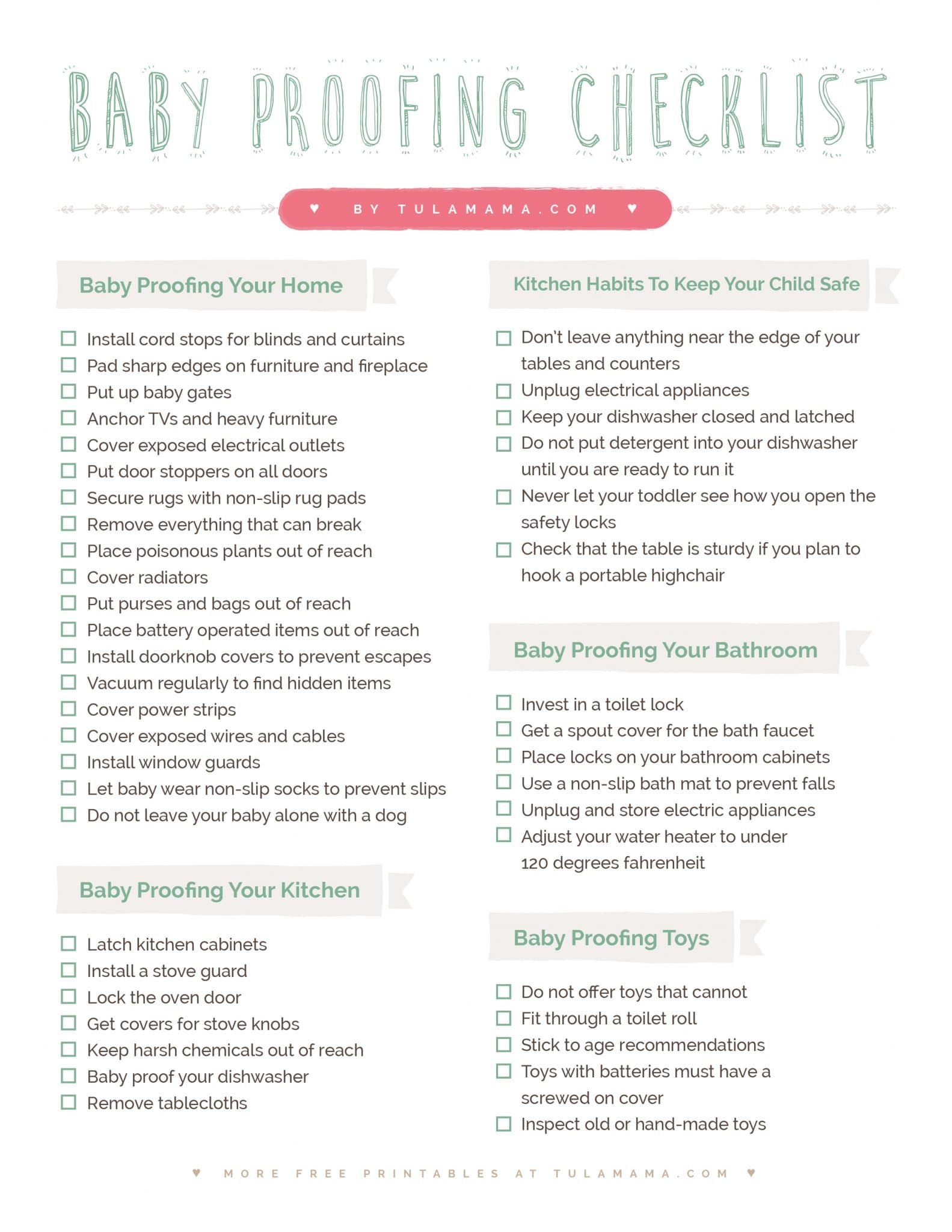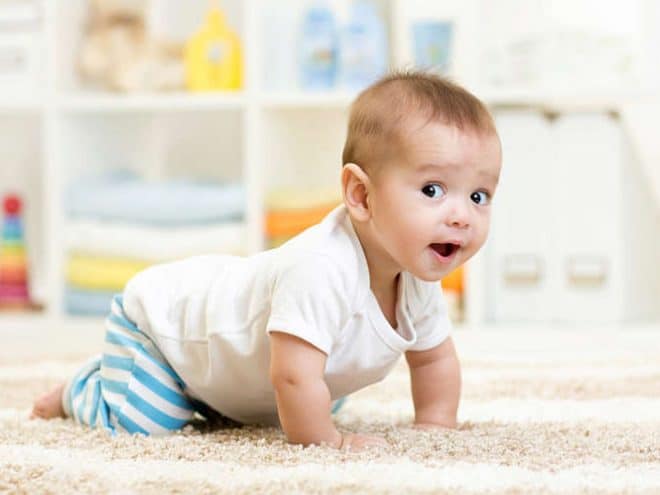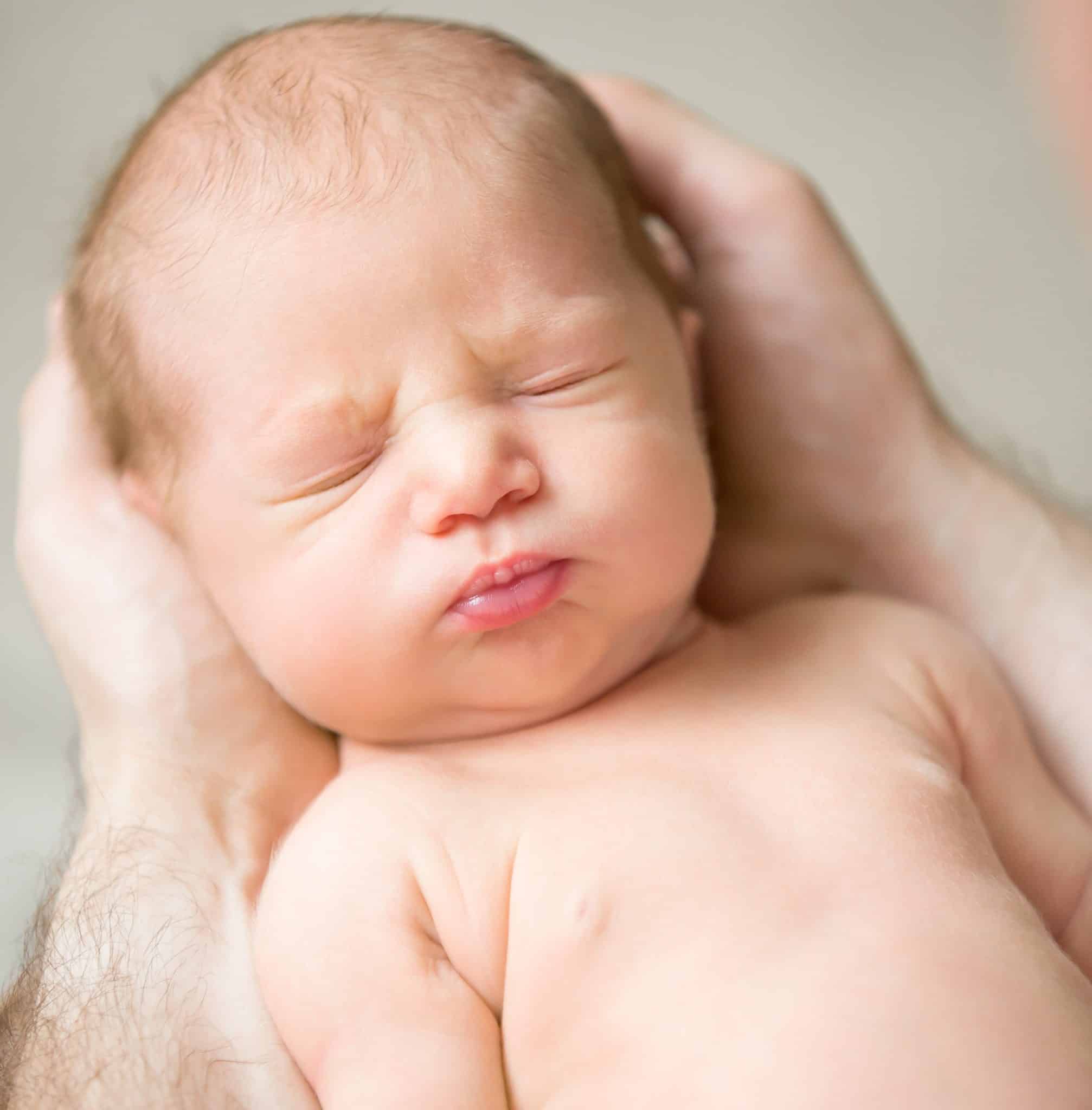As a new parent, tracking your baby’s development is exciting! You’ll be eager to find out about these new milestones, like when will your baby smile for the first time, laugh, sit, etc. Another big milestone you’ll be eager to track is when do babies crawl?
Crawling is your baby’s first method of moving on their own!
When Do Babies Crawl?
Though the learning process is different for every baby, studies show that your baby is likely to start crawling between months 6 to 10. There are various crawling styles, and it’s always exciting to see which one your baby will follow.
Different Crawling Styles
Once your baby starts to progress in their crawling, you can identify their style of crawling with this list below.
Classic Crawl
You will see your baby come up on their hands and knees, crawl forward, alternating between their arms and knees. When parents ask “when do babies crawl,” this is usually what they are anticipating.
Bottom Scoot
Your baby scoots on his/her bottom. Older babies may use their hands to push across the floor while sitting upright on their bottoms.
Commando Crawl
The commando crawl is when your baby starts to creep on the floor. Their legs and belly will be down on the ground as they pull themselves forward with their arms.
The commando crawl is also known as the “belly crawl.”
Rolling Crawl
Your baby will roll around with their entire body instead of using their arms and legs.
Tripod Crawl
Your baby will start to move with one or both hands on the ground, and one knee.
Bear Crawl
This is like the commando crawl, but not with their hands and knees flat on the ground. Instead, they would have their arms and legs straight and their bottoms pointed up.
Leapfrog Crawl
The leapfrog crawl is like the Bear crawl, but instead of staying on the ground. Your baby will lift their upper body then start thrusting themselves forward as they move.
Crab Crawl
According to Today.com, crab crawling is when your baby moves with either one or both legs tucked under.
Ways to Encourage Your Baby To Crawl
Here are a couple of ways you can motivate your baby to crawl.
Tummy Time
Occupy your time by playing with your baby as they are flat on their tummy. Exercises, as they lay on their belly, will help develop muscles for their back, neck, and arms. Practicing tummy time every day builds strength that can improve your baby’s crawling.
Propping Up Your Baby To Sit
Position your baby to sit-up-right with your help. Letting them sit by themselves helps gain muscles for crawling. Adjusting their sitting can also help them learn and discover new things about their body. Once they are comfortable, they will want to experiment with moving their body.
Keep Toys Out Of Reach But Within Sight
Use your baby’s favorite toys to grab their attention. If a toy is out of reach but within their sight, your baby will need to think of new ways to get to it. Leaving their toys farther than usual would motivate them to reach out and push them to move forward.
Constantly encouraging your baby will let them experiment with moving their arms and legs.
Limit Your Baby’s Use Of Supportive Tools
Supportive tools and equipment like walkers are important for your baby. However, they may provide too much support for your baby and potentially slow down the process of their muscular development. This can delay the process as they learn how to crawl and walk. Create set times for the use and play of these supportive devices.
Do Baby Push-Ups
Teach your baby how to do push-ups! Push-ups provide strength under the chest which supports the muscles around that area. You can also do the pushups yourself and have your baby try to copy your movements.
How To Keep Your Crawling Baby Safe?
Have your baby near you as they learn how to crawl. It’s very important that you stay with your baby every step of the way. Babies can easily hurt themselves in the process if they learn without supervision. Here are a few helpful tips for keeping your baby safe while crawling.

- Let your baby wear comfortable clothes, especially around their knees.
- Remove hazards and breakable things.
- Keep all stairs gated. When it looks like your baby is comfortable, you can teach him/her the upward and downward movements of using the stairs.
- Make sure your baby does not start to climb on the furniture. If they start to climb, create a safe place where they can climb – preferably a space with soft items like pillows. Click here for lots more.

What Are The Benefits From Crawling?
Crawling may not be necessary for your baby’s growth, but it does come with many benefits!
- Crawling teaches your baby to use and coordinate with both sides of their body equally, helping them strengthen both sides of their arm and leg muscles.
- Crawling will be your baby’s first motor activities that will use both sides of their brain. This will help in forming learning patterns, visual tracking, and will even help create a strong foundation for developing skills.
What If My Baby Isn’t Crawling?
Don’t be overly concerned if your baby has trouble crawling on their own. Crawling does not define their growth. This is only a transition stage until they could walk.
Early crawlers don’t mean they could be early walkers. Your baby might prefer to crawl as they move around for quite a while. Sometimes they skip the crawling phase altogether and start to walk early on.
If your baby isn’t showing signs of moving around, speak to your pediatrician. When they are about 6 to 7 months old and they can’t perform any basic movements, it is necessary for you to consult with a doctor.
What’s Next For You and Your Baby?
The next step to overcome is when your baby starts walking on their own. Your baby’s crawling will turn into cruising, then walking, then running! It’s only a matter of time until they start jumping and dancing everywhere.
Note From The Author
When do babies crawl? It’s just one of many milestones to look forward to. Check out the rest of our milestone series.












